Pilecki: The man who unveiled the Holocaust and ended up executed by the communists
In the German concentration camp of Auschwitz had 1.3 million prisoners. Some will be surprised to learn that there was a man who voluntarily entered Auschwitz.
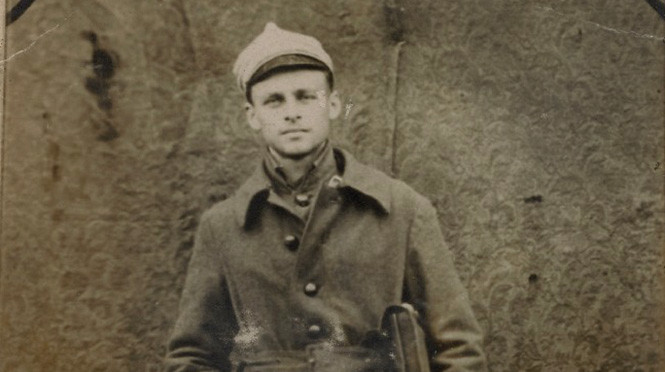
Witold Pilecki as a young man, in military uniform, in 1922
A Polish born in Russia and with an early military career
Witold Pilecki was born on May 13, 1901 in Olonets (Russia), where many Poles had been deported after the so-called January Uprising (1863) led by the Poles who then lived under the Tsar's dominions. As a child, Pilecki moved to Vilna (Lithuania, then also under Russian rule) and joined the ZHP, an organization of Polish scouts. He began here his long military career. At the age of 17 he became an explorer of the ZHP and participated in the First World War. When finishing this war, and only with 18 years, he participated in a new one, the Polish-Soviet War of 1919, like member of a unit of cavalry of the Polish regular Army. In the interwar period he continued his military career in the cavalry, reaching the rank of second lieutenant and moving to the reserve in 1926. In 1931 he married Maria Ostrowska, and in the following two years they had a boy, Andrzej, and a miña, Zosia. In addition to working on his family farm in Sukurcze, he worked as a painter and also as a paramilitary instructor in his locality (Poland is a country with a great tradition in this).
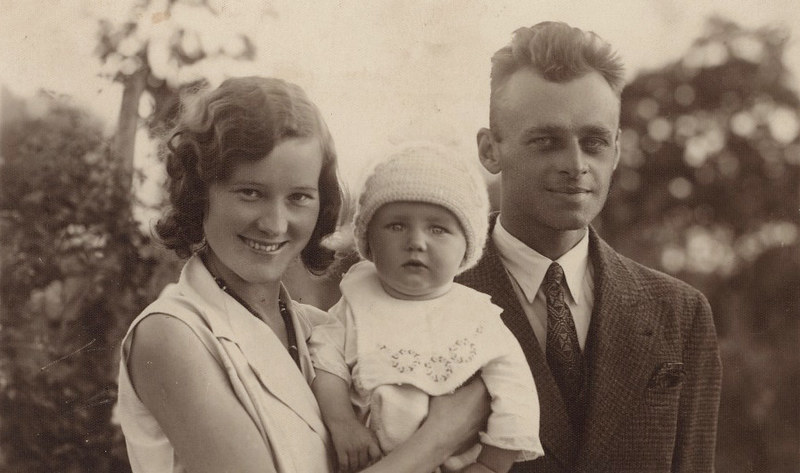
Pilecki with his wife, Maria, and his son Andrzej
The Second World War and the Polish resistance
Before the imminence of the German invasion, Pilecki was mobilized in August 1939 and put in charge of a cavalry platoon. Although there are many jokes about the charges of Polish cavalry against German tanks, the men of Pilecki managed to destroy seven German tanks and three planes, two of them on the ground. After the Soviet invasion of Poland on September 17, the division of Pilecki was dissolved and he left for Warsaw with his commander, Major Jan Włodarkiewicz, where both, together with Lieutenant Colonel Władysław Surmacki, founded in November 1939 the Tajna Armia Polska (Polish Secret Army), one of the first resistance organizations of the World War II, which reached 19,000 fighters and later joined the germ of what in 1942 would be called the Armia Krajowa (Home Army), the main organization of the Polish resistance and one of the largest resistance groups in the war (it reached about 400,000 members).
Objective: to infiltrate the hell of Auschwitz
In the first of 1940 the Germans started the Auschwitz concentration camp on the basis of former barracks of the Polish Army. That same year Pilecki presented his superiors a plan to infiltrate the field, to gather information about it (until then the true purpose of these extermination camps was unknown) and to organize a resistance group inside. Their commanders accepted and Pilecki, using a false name -Tomasz Serafiński- was exposed during a Nazi raid in Warsaw on September 19, 1940, in which 2,000 civilians were apprehended. Two days later he was interned in Auschwitz, where he was tattooed with the number 4859: his new identity as a prisoner. Once inside, and with other Polish military, he founded the Związek Organizacji Wojskowych (ZOW, Union of Military Organizations), with which they began to prepare to revolt the field in case the allies arrived in Poland.
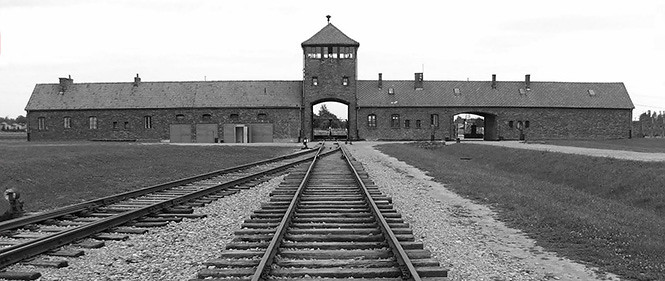
The extermination camp of Auschwitz, created by the Nazis in Poland
Pilecki sent reports from Auschwitz between 1940 to 1943
In October 1940 Pilecki began sending reports to Warsaw about what was happening inside Auschwitz. In November, the first reports of the genocide that was being perpetrated in Auschwitz began to arrive in the Polish capital. As of March 1941, these reports began to arrive to the Polish Government in exile, based in London. In 1942 they already broadcast their reports directly from the field using a secret radio station built by the ZOW with contraband pieces. These reports became the most important source of information for the allies about the true situation of the Nazi extermination camps. On June 20, 1942, four Poles managed to escape from Auschwitz disguised as members of the SS. One of them, Stanisław Gustaw Jaster, member of the ZOW, had a complete Pilecki report for the allies about what was happening at Auschwitz. In the fall of 1942 the radio station of the ZOW in Auschwitz had to be dismantled due to the high risk of being discovered. By then, the Nazis had redoubled their efforts to dismantle the ZOW, which had also spread to the Birkenau camp and had more than a thousand members, killing many of them.
The 'W Report' on Auschwitz, labeled as 'exaggerated' by the British
Convinced that outside help would not come, Pilecki escaped from Auschwitz on the night of April 26 to 27, 1943. He had spent 949 days in the extermination camp, facing illness, abuse, hunger and cold. Shortly after his escape, he wrote the "W Report" (Raport Witolda), containing facts and precise information about the situation in Auschwitz and also a description of the resistance movement he had formed inside the camp. The names cited in the report were encrypted as numbers, with an encryption key that was not included in the report itself. The document included statements by other ZOW members: Aleksander Wielkopolski, Stefan Bielecki, Antoni Wozniak, Aleksandra Palińskiego, Ferdinand Trojnickiego, Eleonora Ostrowska and Stefan Milkowski. Attached to the report was the "Teren S Report," which contained the names of the members of the ZOW, including those killed in Auschwitz, those who died of hunger or illness and those who were taken to other fields. The list included the names of the escaped prisoners, at the risk of their own lives, to keep reports of what was happening in the camp: Wincenty Gawron (11237), Stefan Bielecki (12692), Mieczysław Januszewski (711), Stanisław Jaster (6438), Jan Redzej (5430), Edward Ciesielski (12969) and Witold Pilecki himself (4859). Pilecki also added his personal impressions: "I witnessed frightful images," which he compared with Dante's hell.
The "W Report" was sent to London. Already before his reception, and before the previous reports arrived via Warsaw and by radio, the Polish Government in exile had asked the British allies to carry out an air attack on Auschwitz that would allow a flight of prisoners. That attack never occurred. The British considered the report "exaggerated". Pilecki had also proposed to Armia Krajowa to assault the land by land, but the AK did not have the necessary means for such a military operation. Pilecki continued to coordinate the work of the AK and the ZOW (which on October 7 would provide explosives to the Sonderkommandos who rose, unsuccessfully, at Auschwitz). In February 1944 Pilecki was promoted to captain of cavalry (the Armia Krajowa functioned as a military organization with all formalities) and joined the Niepodległość (NIE), a secret branch of the AK created before the foreseeable Soviet occupation of Poland to prepare the resistance to the new occupants (remember that the Soviets had invaded the eastern part of Poland after the Ribbentrop-Molotov Pact of August 1939).
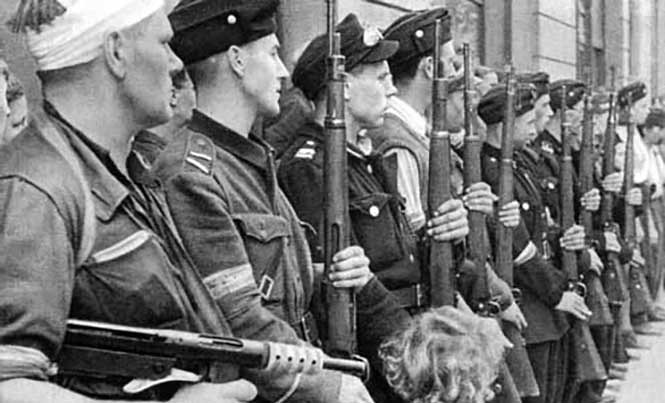
Soldiers of the Armia Krajowa, the largest group of the Polish resistance, in the Warsaw Uprising of 1944
The Warsaw Uprising, the end of the war and the return to Poland
On August 1, 1944, when the Warsaw Uprising took place, Pilecki joined the fight as another soldier, hiding his rank, in the Chrobry II Battalion of Armia Krajowa. After the defeat of the uprising, on October 5, 1944, he was again captured by the Germans, but this time interned as a Polish officer in the Łambinowice prison camp, for a few days, and was later transferred to Oflag VII-A Murnau, a Polish prisoners camp in southern Bavaria, where he tried to document the lives of his fellow captives. The camp was liberated by the Americans on April 29, 1945. After his release, Pilecki wrote a new report on his experience of more than 100 pages and, as in the "W Report" of 1943, with the names of people coded (an information that could not be deciphered since the key was lost). In May the NIE, the secret section of the AK, was dissolved. In June 1945, after the war in Europe was over, Pilecki volunteered to join the Second Polish Army Corps of General Anders, who had fought in Italy. He was admitted on July 11. In September he met with Anders, who approved his return to Poland. He proposed to gather information on the situation in his country, now under Soviet occupation. In October 1945 he returned to Poland with false documentation, under the name of Roman Jezierski.

File of prisoner of Pilecki after its arrest on the part of the Polish communist dictatorship
The occupation changes sign: before the Nazis, now the Communists
After passing through Krakow, on December 8 he arrived in Warsaw. The repression had passed from the hands of the Gestapo to those of the Soviet NKVD (the predecessor secret police of the KGB), which had also begun to use the Auschwitz facilities as a prison camp. The Wolność i Niezawisłość (WiN, Freedom and Independence), a resistance organization composed of former members of the AK and other organizations of the Polish resistance against the Nazi occupation, had formed a few months earlier, but this time with an eye on resisting the new invader: the USSR, a struggle that lasted until the complete dismantling of WiN by the Polish Communist Government in 1963.
Pilecki stayed to live in Warsaw, where he worked as a warehouseman. At the beginning of 1946, in the absence of support from the British and the Americans for the return of democracy to Poland, the Polish Government in exile instructed members of the resistance to return to civilian life or flee from the country. In September 1946 a messenger from the Polish Second Corps of Anders, Captain Jadwiga Mierzejewska "Danuta", ordered Pilecki to leave Poland, something the captain refused. The WiN continued its activity, and in April 1947 Pilecki received new instructions to collect evidence on the arrest, imprisonment, executions and deportation to the USSR of members of the Polish resistance and soldiers of the Second Polish Corps of Anders who were returning to country. On May 8, 1947 Pilecki was arrested by the Polish Communist Government. He was locked in Ward X of the Mokotów prison, in Warsaw. He was interrogated and tortured, but he did not reveal anything.
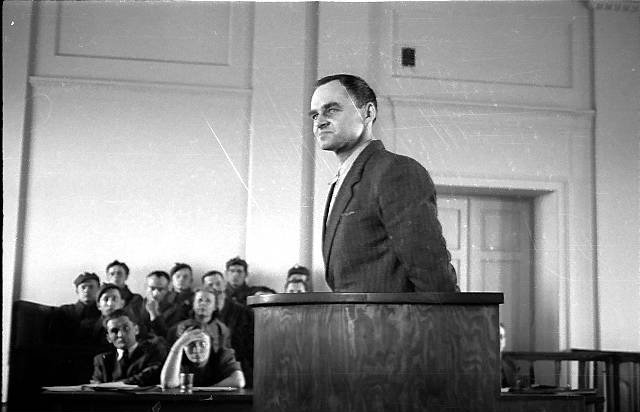
Pilecki, photographed on March 3, 1948 before the military court that sentenced him to death
Judgment, execution and censorship
On March 3, 1948, in the Military Court of the District of Warsaw, a judicial proceeding was initiated against the so-called "Witold Group", with himself, Maria Szelągowski, Tadeusz Płużański, Richard Jamontt-Krzywickiego, Maximiliano Kauckiego, Witold Różyckiego, Macario Sieradzki and Jerzy Nowakowski in the dock. The court charged Pilecko with murder charges, cooperating with a foreign power (in reference to the United Kingdom) and passing information to Anders' Second Polish Corps. Pilecki denied the charges. Ironically, the court was chaired by Lieutenant-Colonel Jan Hryckowian, acting as prosecutor Major Czesław Łapiński: both had been members of the Armia Krajowa. On March 15, he was sentenced to death.
His wife, Maria, begged for clemency from Bolesław Bierut, the Polish communist president, a puppet of Stalin. Bierut did not grant him a pardon. Pilecki, the person who had risked his life voluntarily entering Auschwitz to uncover what was happening there, was shot in the head in the boiler room of the Mokotów prison on the night of May 25, 1948. His body was not given to his family, and today it is unknown where his remains were buried. A symbolic headstone reminds him at the Ostrowa-Mazowiecka cemetery. The "W Report" was confiscated by the communist authorities in May 1947. Until 1989, any reference to the person and life of Pilecki was subject to communist censorship in Poland.
A hero for Poland after the fall of communism
 Zosia Pilecki made great efforts to get the memory of her father rehabilitated. That did not happen until the case was reviewed by the Constitutional Chamber of the Supreme Court of Military Justice on October 1, 1990, after the fall of the communist dictatorship. The Court ruled that Pilecki had been unjustly condemned and acknowledged the patriotic attitude of the murdered captain. In 2000 the "W Report" was published for the first time in Poland, 55 years after the end of the Second World War. In July 2006 the then President of the Republic of Poland, Lech Kaczyński, awarded Pilecki, posthumously, the Order of the White Eagle, the highest civic-military decoration in the country, in recognition of his merits.
Zosia Pilecki made great efforts to get the memory of her father rehabilitated. That did not happen until the case was reviewed by the Constitutional Chamber of the Supreme Court of Military Justice on October 1, 1990, after the fall of the communist dictatorship. The Court ruled that Pilecki had been unjustly condemned and acknowledged the patriotic attitude of the murdered captain. In 2000 the "W Report" was published for the first time in Poland, 55 years after the end of the Second World War. In July 2006 the then President of the Republic of Poland, Lech Kaczyński, awarded Pilecki, posthumously, the Order of the White Eagle, the highest civic-military decoration in the country, in recognition of his merits.
To this day, in Poland he is recognized as a war hero. His life would be for a movie, but so far no one in Hollywood has dared to film it. The only feature film dedicated to his figure, "Smierc rotmistrza Pileckiego" (The Death of Captain Pilecki), was filmed in Poland in 2006 as a film to premiere on television. In 2014 the Swedish power metal band Sabaton, who usually devotes his songs to topics related to World War II, dedicated to Pilecki their song "Inmate 4859", which you can listen to below:
|
Don't miss the news and content that interest you. Receive the free daily newsletter in your email: Click here to subscribe |
- Most read
- The 'hole' without civil flights around Paris during the opening of the Olympic Games
- Spain vetoes the Russian frigate 'Shtandart', which intended to reach Vigo, in all its ports
- The interior of the Statue of Liberty torch and the sabotage that canceled its visits
- The ten oldest national flags in the world that are still in use today
- The BNG boasts of the support of a terrorist group and a dictatorship at a public event
- The Russian intelligence document that sparked a hoax about French troops
- A virtual tour of ancient Rome in full color, just as it was in its heyday
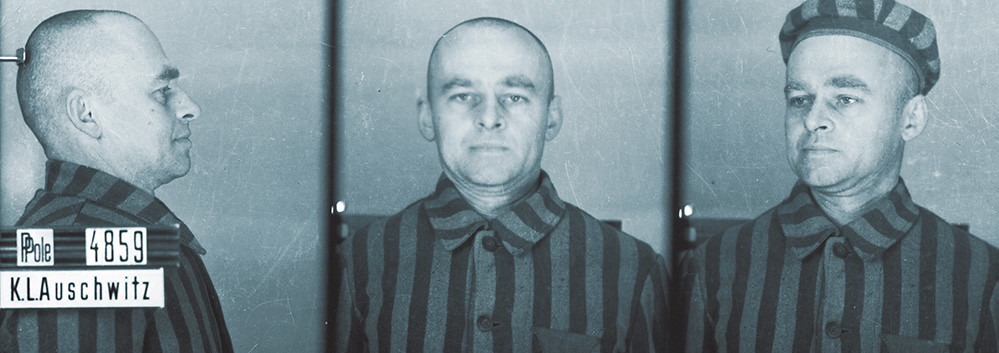
 ES
ES





Comentarios:
Brigitte Heinig/ Lönnig
I am in awe of this document, never known of this courageous Man, myself been born years after the WW2 in Berlin West – didn’t learned anything in school about that War, no names or whatsoever, stories about the horrors only in whispers and behind hands, they wanted us kids live without any knowledge of all of those years, this Man is such a great character with guts, humanity and love for a free country, so glad I came up on this document now ! Thank You, May Love Hope and Freedom be with you and all of us.
4:10 | 28/01/19
Opina sobre esta entrada: